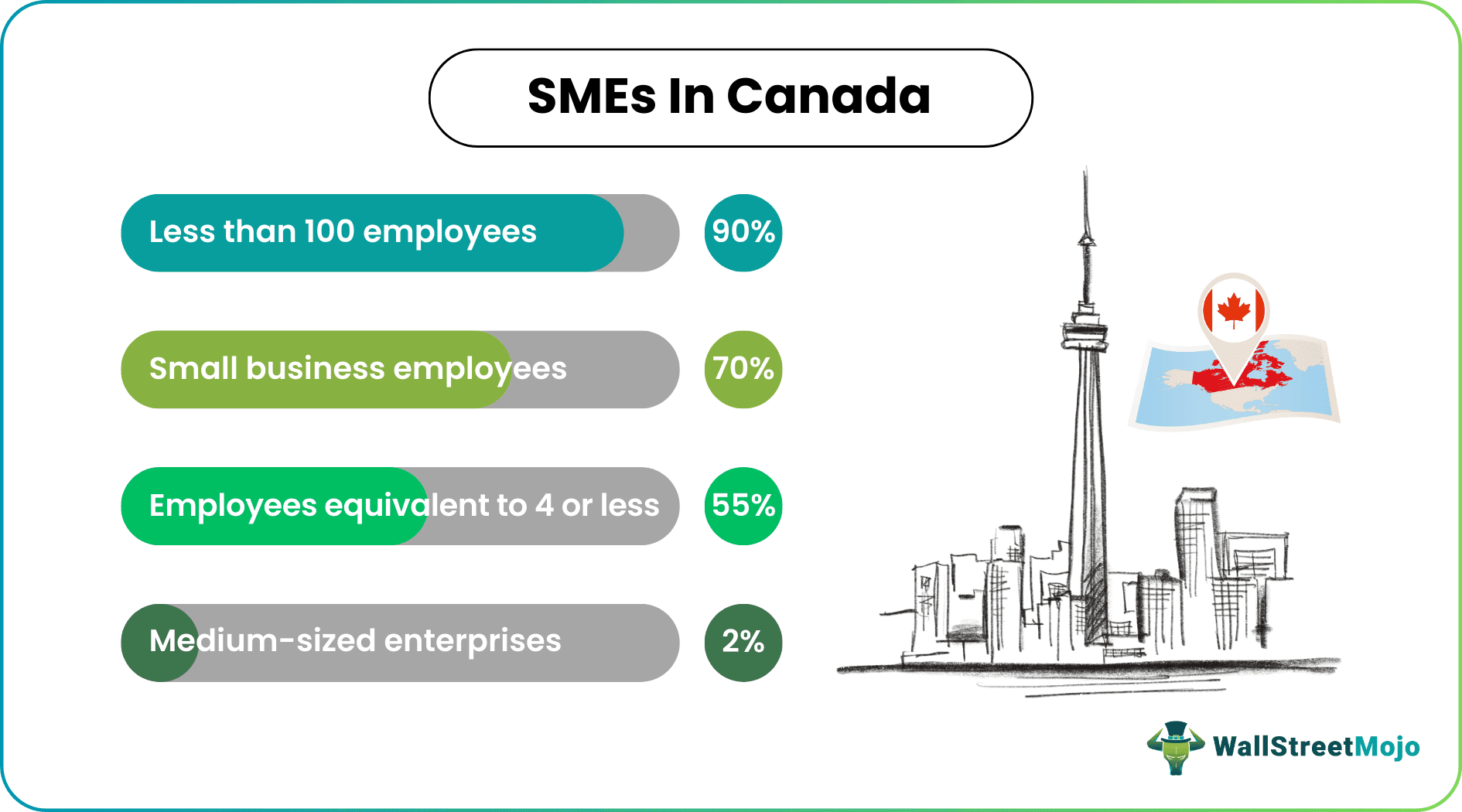Table Of Contents
Full Form of SME - Small and Medium Enterprises
The full form of SME is Small and Medium Enterprises. This category symbolizes a business with capital, assets, staff, etc., within a certain limit categorized by each nation. Organizations categorize their respective business's size and scale per the country's legal structure. These SMEs provide comprehensive services to society and serve local demands. However, the high-scale business cannot mark its presence due to a lower understanding of local demand and several other obligations.

However, a small and medium enterprise creates job opportunities as it requires a staff of various categories. Thus, these industries help to fulfill both the demand and supply aspects of the economy. Across the Globe, Economists and policymakers appreciate the role of SMEs within the economy. However, a major challenge a business within the SME category faces is 'funding.' Thus, more than twenty countries introduced their SME segment besides their ongoing stock exchanges to fulfill the need.
History of Indian SME Exchanges
In India, SME exchanges operate along with primary stock exchanges like the Bombay Stock Exchange (BSE) and National Stock Exchange (NSE). SEBI initiated the formation of SMEs in 2008, which the Prime Minister's Task Force carried forward in January 2010, emphasizing micro, small, and medium enterprises. The establishment of BSE SME channelized the movement, and NSE Emerged platforms. In March 2018, SEBI allowed startup funding through its listing within the SME segment; it provided several relaxations to the startups. Thus, the above platform stood as one of the convenient options for small and medium enterprises and startups to receive funding for their major businesses.
SMEs in the US
The USA policymakers classify Small Business Administration (SBA) based on ownership, the number of staff, industry scenario, etc. generally, companies under 500 staff are categorized under the SME segment. On the other hand, when in the case of capital-intensive sectors, staff under 1,000 might be considered SMEs, as the basic requirement of the sector is labor-oriented, and the sector employs many employees.
SMEs in Canada

Canada has more business that falls under the category of SMEs, where ~55% of the businesses have employees equivalent to four or fewer. Less than 2% of businesses fall under the category of medium-sized enterprises. Small businesses employ ~70% of the total workforce across the country. More than 90% of companies in Canada have less than 100 employees, regarded as small enterprises. These companies contribute roughly one-fourth of the total Canadian exports. However, per the recent business trend, only one-fourth of the companies invest in Canada's research and development (R&D) segment.
Advantages
- This sector helps in the generation of employment as well as social services. However, big companies cannot determine the change in trends, demands, or a shift in consumer preferences. Again, due to the scale of operation, the big firms do not always tend to start a new segment. Thus, being in the small-scale category, these businesses enjoy catering to the segment with relatively low demand.
- In many instances, the unskilled, semi-skilled laborers and the workers do not get a job in the big business. Instead, they join small and medium enterprises and contribute to the production or service process. Thus, the small and medium enterprises segment provides employment and training to many workforces within the economy.
- Big organizations look for a change in trends and want to track the shift in consumer sentiments. In several cases, they look for the business activities undertaken by small and medium enterprises. Thus, these small and medium enterprises have majorly driven the basics of change in trends.
- One of this segment's key features is how they adapt to the business segment. Because of their size and structure, these companies are flexible and committed to changing their businesses according to market demand.
- Decisions are taken promptly by SMEs as compared to big organizations. Moreover, as the staff is semi-skilled, it may train them per the business's requirement, which is not an easy task in the case of large organizations.
Disadvantages
- The small and medium enterprises segment lacks scalability due to capital constraints. In addition, the segment cannot cater to the larger audience due to constraints like a larger production facility, a wide distribution range, and the absence of skilled and high-skilled laborers.
- Businesses that fall under the category of SMEs have low bargaining power due to the absence of economies of scale. As a result, the suppliers do not provide extra discounts due to the lack of high-scale orders.
- Large companies can access capital through various sources like equity infusion, debenture issuance, etc., while SMEs remain aloof from these benefits.
- It is the lack of company structure. The business runs on individual capacity, so the business does not remain future-proof. An individual or individuals take each of the major decisions. Thus, the top-level management's retirement might end the business's future.
- Small and medium enterprises are not always the investor's first preferences due to the size and scale of the businesses. In several instances, the small-scale industries remain aloof from the investor's radar as most esteemed investors focus on the top market capitalization companies trading on the broader indexes.
Conclusion
Small and medium enterprises represent the major economic activities and employ the semi-skilled and unskilled workforce. Therefore, the major part of the economy is driven by the contribution made by the SME segment.

